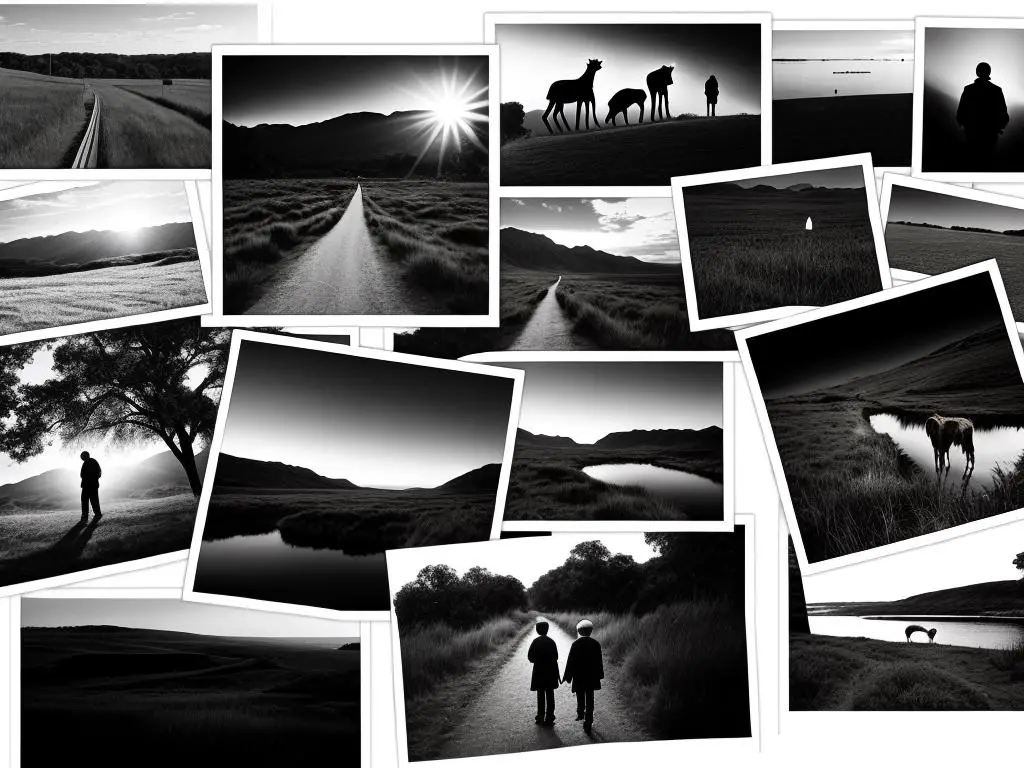Documentary photography is an art which holds the power to preserve moments in time, chronicle events, and narrate stories without needing written words. It captures the raw truth, profound realities, and human experiences that evoke strong emotions and provoke thought among its audience. This art form has seen a diverse evolution throughout history, from its early days serving as windows to events, to its contemporary use as a tool for advocacy, education, and social change. As we explore its rich history, understand its principles and techniques, delve into the ethical considerations it brings forth, and ultimately learn practical tips for skill enhancement, we embark on a journey to appreciate the depth and significance of the documentary photography.
History and Evolution of Documentary Photography
Genesis of Documentary Photography
Documentary photography traces its origins back to the late 19th century, with the invention of hand-held cameras that made the capture of real-life events significantly easier. Early instances sparked the course of this photographic genre’s evolution, with pioneers like Jacob Riis in the United States and John Thomson in the United Kingdom. Riis, a police reporter and social reformer, used photography as a tool to expose the dire living conditions in New York City’s slums in his 1890 book, “How the Other Half Lives.” He leveraged the power of visuals to expose critical social issues of the time and prompted needful societal changes.
John Thomson, a Scottish photographer known for his photographic portrayals of Asian landscapes and cultures, attempted something similar. He documented London’s streets in the 1870s, offering a vivid perspective of the urban poor’s circumstances and paving the way for social documentary photography.
The FSA and Growth of Documentary Photography
The Farm Security Administration (FSA) played an influential part in the development of Documentary photography during the 1930s. Created to fight rural poverty during the Great Depression, the FSA hired photographers and writers to report and document the plight of poor farmers. Dorothea Lange, Walker Evans, and Gordon Parks were among the renowned photographers employed by the FSA who used their technical skills to highlight the suffering rural population during this period.
It was during that period that Lange captured her most iconic image, “Migrant Mother,” depicting a dire representation of poverty and despair. This photograph and many others from the FSA project played a vital role in shaping the practice and purpose of documentary photography.
Documentary Photography Post-World War II
The years following World War II saw a shift in the use and perception of documentary photography. Photographers started shifting focus, offering more personal, introspective looks at societal issues, reflecting changes and tensions in society. Robert Frank, a Swiss photographer, was one of the most influential figures of this phase. His book, “The Americans,” published in 1958, took an unconventional approach to documentary photography, moving away from an objective portrayal of reality and delving more into personal and subjective realities.
Modern Documentary Photography and Photojournalism
Today, documentary photography continues to evolve within the realm of photojournalism, focusing on long-term projects with a more narrative approach than single-shot news stories. This genre gets media recognition and international awards, featuring compelling stories about human rights, social issues, and conflicts across the globe.
Key figures in this contemporary practice include Sebastião Salgado, a Brazilian photojournalist who highlights issues related to migration, labor, and the environment, and James Nachtwey, an American photojournalist, widely rated for his moving coverage of war and conflict areas.
Emergence of Digital and Mobile Photography
With digital and mobile photography, new dynamics are shaping the landscape of documentary photography. The easy availability of camera phones and editing tools has democratized the field, making it accessible for any enthusiastic hobbyist or aspiring professional. This shift has also brought about new ethical considerations and approaches, seasoned with ongoing debates about authenticity and manipulation in the digital age.
Wrapping It Up
In summary, documentary photography’s rich history, marked by stark images of New York slums in the late 19th century and raw realities from 21st-century battlefields, provides an intriguing exploration of societal narratives and historical backgrounds. This genre, influenced by noteworthy works and pioneering personalities, continues to evolve, shaping our understanding of the world. As technology propels its development, documentary photography maintains its vital role in narrating unvarnished truths, bearing witness to events, and instigating transformative discussions.

Photo by giamboscaro on Unsplash
Principles & Techniques of Documentary Photography
Decoding Documentary Photography
Documentary photography represents a focused genre of photography dedicated to chronicling meaningful historical events, ordinary life scenes, or environmental narratives. The intent is to present a powerful, honest, and moving portrayal of our world. For enthusiasts aspiring to excel in this craft, it’s integral to understand the fundamental principles involved, such as effective framing, optimal light use, and thoughtful composition, among other key techniques.
Framing in Documentary Photography
One of the fundamental principles in documentary photography is framing. This technique is all about what to include or exclude in your shot, aiding in directing the viewer’s focus to exactly what is important in your image. As the adage goes, “A picture is worth a thousand words,” the complexity of framing in documentary photography lies in ensuring that the words conveyed are as per your narrative. Good framing eliminates distractions, emphasizes your subject, influences mood, and supports the visual story you are trying to tell.
Role of Light in Documentary Photography
Understanding and utilizing light effectively is crucial in documentary photography. The quality, direction, color, and amount of light can dramatically affect your images. It can help emphasize the subject, evoke emotions, create atmosphere, and add depth and dimension to your images. Soft light creates gentle transitions between light and dark areas, making the subject appear more natural and the ambiance more inviting. In contrast, hard light creates stark contrasts, which can be used to amplify drama or underscore specific details.
Composition in Documentary Photography
Composition refers to how elements are arranged within the frame and is an essential part of creating engaging and impactful documentary photography. Following certain rules of composition, like the Rule of Thirds, balancing elements, leading lines, symmetry, and patterns, can help in creating visually exciting images. However, these rules serve as a guide, and skilled photographers often harness the power of breaking these rules creatively to create compelling compositions.
Narrative Building in Documentary Photography
A series of photographs can tell a story, evoke emotions, and provide a deeper understanding of a subject or event. This narrative-building process involves creating a definitive beginning, middle, and end in your series. It’s about structuring shots in a particular order to develop a storyline or construct a visual argument. A powerful narrative can elicit empathy, spark curiosity, or provoke thought among viewers. However, consistency is key – in style, tone, and perspective – in order to maintain the story’s coherence.
Diving into the Art of Documentary Photography
The transformation of documentary photography from simple snap-shots to profound narration is an art that involves a blend of strong compositions, proficient use of light, and the ability to create striking frames. Becoming a skilled documentary photographer requires not just the expertise in capturing stunning images, but also the aptitude to narrate captivating visual tales. It’s essential to remember that the ethos of documentary photography is presenting the truth. It serves as a mirror to society showcasing the real, raw moments and creating a pictorial history for the generations to come.

Ethical Considerations in Documentary Photography
Navigating the Ethical Aspects of Documentary Photography
The journey of a documentary photographer revolves around documenting authentic events and real-life situations to narrate a story or chronicle history. This noble objective, however, brings forth numerous ethical dilemmas. A documentary photographer must be able to tackle these dilemmas from their responsibility towards their subjects, to the potential impact of their work on individuals and society, and the ethical controversies that envelop this field.
The Photographer’s Duty to Their Subjects
The primary ethical responsibility of a photographer lies with their subjects, who are often the center of the narrative. The first rule of thumb for many photojournalists and documentary photographers is to respect the autonomy, dignity, and privacy of the individuals they photograph. This means that photographers must ensure that their subjects’ rights are not violated. They should obtain informed consent except in public spaces or situations where it is not practical or reasonable to ask, and avoid exploiting their subjects for personal or commercial gain.
There are exceptions and grey areas though. In conflict zones or public protests, for example, getting explicit consent from every individual could be hard, if not impossible. Photographers have to exercise their judgment and consider the potential harm their photos might cause to the subjects, such as retaliation or discrimination.
Ethical Implications for the Society
Documentary photographers don’t just capture individual stories; they also frame societal narratives. Images are powerful means of communication, and can greatly influence public opinion, reinforce or challenge stereotypes, and even instigate societal changes. Just imagine the iconic images from the Vietnam War or the Civil Rights Movement.
This presents a double-edged sword – while photography can shed light on societal issues and inspire advocacy, it can also perpetuate harmful narratives if not used carefully, especially when subjects are misrepresented or their stories are taken out of context.
Ethical Debates in Documentary Photography
A common debate in this field is whether it is ethical for a photographer to intervene in the events they are documenting. While some argue that as observers, photographers should not interfere with the unfolding of events, others feel that human morality outweighs the objective portrayal of reality. This is especially relevant when photographers encounter situations where people are in immediate danger or are experiencing severe distress.
Another debate centres around the question of authenticity and manipulation in documentary photography. Advancements in camera technology and editing software have made it easier to manipulate images, which could potentially mislead viewers and distort the true narrative.
Setting Sail in the Ethical World
Embarking on the journey of documentary photography is not straightforward, given its myriad ethical considerations and debates. However, being cognizant of these factors enables responsible and informed decision-making. The prime focus of this craft isn’t solely about capturing the most dramatic or visually captivating scenes, but rather it’s about creating a genuine, deferential, and uplifting portrayal of reality. Over time, with dedication to ethical practices, and constant practice, your enthusiasm can transform into a skill set that narrates compelling stories and indeed promotes a profound interpretation of our surroundings.

Practical Tips to Improve Documentary Photography Skills
Appreciating the Essence of Documentary Photography
The realm of documentary photography surrounds the art of recording images that narrate a story or recount a specific event, location, or culture. A compelling documentary picture extends beyond merely documenting a scene; it elucidates aspects about its subjects. This could range from highlighting a momentous global concern or incident to gaining a glimpse into the daily existence and heritage of a distinct group. The fundamental objective of documentary photography revolves around educating and enlightening the viewer about the selected topic or situation.
Choosing Meaningful Subjects
Selecting a subject is an integral part of documentary photography as it becomes the main focus of your narrative. Choosing a meaningful subject requires thought and often stems from personal passion or concern. It can be something social, political, or environmental that you wish to bring attention to.
Effective Storytelling Through Image Capturing
Effective storytelling is an essential aspect of documentary photography. The photographs should be able to convey a story more eloquently than words. To achieve this, focus on scene setting, capturing pivotal moments, including details, and establishing relationships between your subjects. This combination allows viewers to connect emotionally with the subject.
Building a Narrative
In documentary photography, individual images come together like a slideshow to create a broader narrative. Building a narrative requires both planning and instinct. Begin by pre-visualizing types of shots that will tell your story, but also be open to spontaneous moments. Your narrative should have a clear beginning, middle, and end, similar to writing.
Mastering Technical Skills
While content is king in documentary photography, mastering certain technical skills will significantly enhance your ability to capture compelling images. Working with natural light, sharp focusing, understanding composition, using color effectively, and finely-tuning exposures are valuable skills to learn and refine.
Infusing Creativity
Documenting reality does not mean your photographs should lack creativity. Infuse creative elements such as unique angles, inventive compositions, and use of light and shadows. These factors will make your photos stand out while preserving their truth and integrity.
Ethics in Documentary Photography
Documentary photographers have an obligation to represent the truth. However, this should not come at the expense of the subjects’ dignity. Always treat your subjects with respect and sensitivity. Seek permission where needed, and avoid exploitation.
Using Documentary Photography for Change
While documentary photography informs and educates, its power can be harnessed to stimulate change or support a cause. Through the power of visual storytelling, documentary photography can shine a light on social, political, or environmental issues that are often overlooked or ignored. This power, when used effectively, can stimulate public interest, provoke discussions, and inspire action.
In summary, good documentary photography needs a combination of technical skills, understanding of the subject matter, and a keen eye for storytelling. Always remember, constantly learning, practicing, and refining your craft will enhance your skills over time.

The world of documentary photography opens a pathway to capture the realities around us, highlighting our skills of observation, resilience, ethics, and creativity. As we continue to understand its history and evolution, master its techniques and principles, reflect on its ethical boundaries, and build our skills to improve our work, we are not only refining our artistry but also contributing to the chronicles of human experience. Remember, every picture tells a story – and it is up to us, as documentary photographers, to tell these stories truthfully and effectively. With these insights and tips at our fingertips, we are equipped to capture the world around us in the most compelling way, leveraging our skills to influence change or make a meaningful statement through our work.
Originally posted 2023-11-02 22:06:02.


